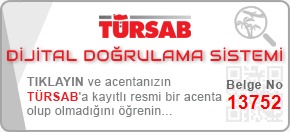Goreme Open Air Museum
Goreme open air museum has been on the UNESCO World Heritage List since 1984. In fact, it is one of the works that made its name in the top two lists in Turkey. In Goreme Open Air Museum, dining halls, monasteries and magnificent churches are located side by side. The churches inside date to the 10th, 11th and 12th centuries. It should be one of the must-see places for tourists coming to Cappadocia. Goreme Open Air Museum is a 2-minute drive or 10-minute walk from Goreme Village. There are many churches and chapels in Goreme open air museum. The most important of these are:

1) Nunnery
The 6-7-storey rock mass located to the left of the museum entrance is known as the "Nunnery". There is a dining hall, kitchen and rooms on each floor. There is also a church. The image of Jesus Christ is depicted on the rock. The monastery has millstone gates that will close the tunnels in case of danger. As it is known, these millstones were also used in underground cities in times of danger.
2) Elmali Church (Apple Church)
The church, which is one of the most striking structures of the region with its vibrant colors, has a square cross plan, four columns, a central dome and a groin vault. It has beautiful frescoes dating back to the 11th and 12th centuries. Where these fell you can see simple red painted decorations from the iconoclastic period. The frescoes depict scenes from the Bible, the life of Jesus, the Hospitality of Abraham and the Three Hebrew Youths. The building takes its name from the apple orchard that collapsed a long time ago in front of the main entrance.
3) Yilanli Church (Snake Church)
This church has a plan consisting of two rooms. It consists of five sections, and the rear section has a flat roof. Red ocher ornaments, frescoes dating back to the 11th century, were painted directly on the wall. Opposite the entrance is a picture of Jesus with a book in his hand, and to the left is Emperor Constantine and Helena on either side of a large cross. Right next to it, St. George and St. Theodore Killing the Snake are depicted. On the opposite wall, Onophrios with a sapling in front of him, as well as Apostle Thomas and St. Basil, the founder of the building, are holding a book in one hand and blessing with the other.
4) St. Barbara Church
This church is located behind the rock where Elmali Church (Apple Church) is located. It has a cross plan with two columns. The north, south and west arms of the cross are barrel vaulted, while the middle, east arm and east corners are domed. There is a main, central apse and two side apses. The motifs are painted in red directly on the rock. The walls and dome are decorated with various motifs such as geometric patterns, mythological animals and military symbols. There are also motifs resembling stonework on the walls. The history of this church dates back to the second half of the 11th century.
5) Karanlik Church (Dark Church)
This church is entered from the north through a winding tunnel. You have to pay an extra entrance fee but it is definitely worth it. There are three tombs to the south of the narthex, two large and the other small. The church has a cross plan and the cross arms are cross-vaulted. The templon of the main apse has been destroyed. This Church dates back to the late 12th century. Some of the scenes on the walls are Deesis, Annunciation, Journey to Bethlehem, Birth of Jesus, Baptism, Resurrection of Lazarus, Transfiguration, Entry into Jerusalem, Last Supper, Betrayal of Judas, Crucifixion and Anastasis.
6) Charikli (Sandal) Church
This two-column church (the other two columns are columnar) is cross-vaulted, has three apses and four domes. Well-preserved frescoes show the life of Jesus, the hospitality of Abraham, and images of saints and donors to the church. Although it resembles both the Karanlik (Dark Church) and Elmali (Apple Church) Churches, the Way of the Cross and the Descent from the Cross scenes make this church different from others. The numbers are often large. The footprints under the Ascension scene give the church its name, meaning "sandal". The history of the church dates back to the end of the 12th century and the beginning of the 13th century. The central dome features a painting of Jesus with busts of Angels. There is the Deesis in the middle apse, the Virgin Mary and the Baby Jesus in the north apse, and the picture of St. Michael in the south apse.
7) Tokali Church (Buckle Church)
Tokali Church is located approximately 50 meters below the museum. You can visit the church with the same ticket you used for Goreme Open Air Museum. It is a complex consisting of 4 main rooms. The entrance to the New Church, which has a rectangular plan with longitudinal axis, is made from the Old Church, which has a barrel vault and a single nave. This rock settlement can be divided into three parts by arches. The building, which houses the most important examples of paintings, was decorated in various periods.
In the Old Church section of Tokali Church (Buckle Church), frescoes with rich red and green bands, dating back to the early 10th century, represent scenes from the Bible. The structure of the New Church, which dominates the main room frescoes, is a distinguishing feature from the others. Among the rock churches in Cappadocia, there are beautiful paintings describing the memories of Jesus in detail in Tokali.
Places to Visit in Cappadocia
1) Goreme Open Air Museum
2) Zelve Open Air Museum
3) Kaymakli Underground City
4) Derinkuyu Underground City
5) Pigeon Valley
6) Three Beauties
7) Love Valley
8) Pashabag
9) Caravanserais
10) Ihlara Valley
11) Urgup
12) Goreme
13) Uchisar
14) Gulshehir









